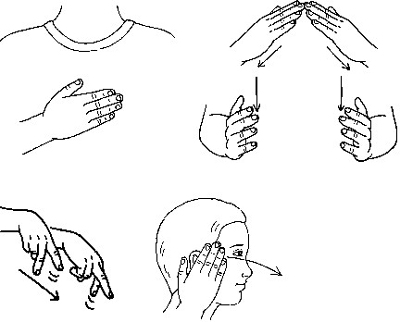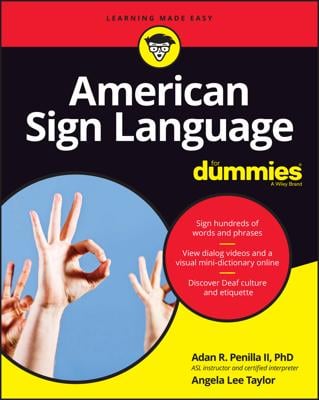To communicate tenses in American Sign Language (ASL), you need your hands and your body. Think of your body as being in the present tense. Showing tense in ASL is partly a matter of where you sign in relation to your body:
Present tense: Signing in present tense is pretty simple — you sign close to your body, just like you normally do in a signed conversation. That’s all there is to it!
Past tense: Signing in past tense is just a bit trickier. To place everything you sign into past tense, you sign finish at chest level either at the beginning or end of the sentence while saying the word “fish,” a shortened version of “finish.” This signals that everything has already happened. Although it doesn’t matter whether you sign the word finish at the beginning or end of the sentence, most Signers place it at the beginning.
Future tense: Signing in future tense works pretty much the same way as signing in past tense. You indicate future tense by signing and saying will at the end of a sentence. The farther you sign the word will from the front of your body, the farther into the future you go. Here are a couple of examples:
English: He can go later.
Sign: HE GO — WILL

English: Mike is walking over to my house.
Sign: MY HOUSE — M-I-K-E — WALKING — WILL

You can easily sign an event that is going to happen in the future. A simple rule to follow: Mention what's planned or intended, then sign “will.”
Participles (“to” plus a verb) and perfect tenses (for example, should have been) are technically passive tenses, which aren't used in ASL.
Here’s a time-sensitive concept that doesn’t quite fit into past, present, or future. To show that you’re not yet finished or that you haven’t even started a task, sign the unaccomplished deed, then sign not yet while shaking your head slightly from side to side, as if saying “no,” at the end of the sentence. You don’t pronounce “not yet,” though; you simply sign it. The following sentence gives you an idea of how you can use this expression:
English: I haven’t eaten.
Sign: ME EAT — NOT YET


